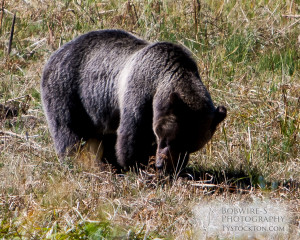Last week, the U.S. Fish and Wildlife Service announced that grizzly bear populations are stable, and that the bears should come off the list of Endangered and Threatened Wildlife. Bear numbers have surpassed what the agency says is the optimum bear population of 674 animals. Current estimates place the number of grizzlies in the Greater Yellowstone Ecosystem around 700 individual bears.

We’ve been here before. Back in 2007, the Fish and Wildlife Service delisted grizzlies in Wyoming, Idaho and Montana, but environmental groups challenged the decision. A federal court, and subsequently a federal appeals court, upheld the relisting. The reasoning was that one of the bears’ chief sources of food, the whitebark pine, was also threatened. The courts said the grizzly management plan didn’t account for the decline in this food source.
However, since 2007, bear populations have remained stable. In most years, they’ve actually increased, despite the decline of whitebark pine nuts. This underscores the statement by Wyoming biologists, who said bears are very resourceful and will find other food sources. This isn’t anything new to people who study the bears, because whitebark pine, by its very nature, is a cyclical food source, anyway. There are years when whitebark pines don’t produce any nuts, but the bears have continued to thrive even in those lean years.
So the Fish and Wildlife Service has finally come around, and the agency is making noise about delisting the bears again. But several groups are already gearing up to challenge the delisting, so it won’t happen without a fight.
I just hope the delisting lasts longer this time than it did last time. I think our Game and Fish Department can prove it’s up to the task of managing the bears without interference from Washington.

